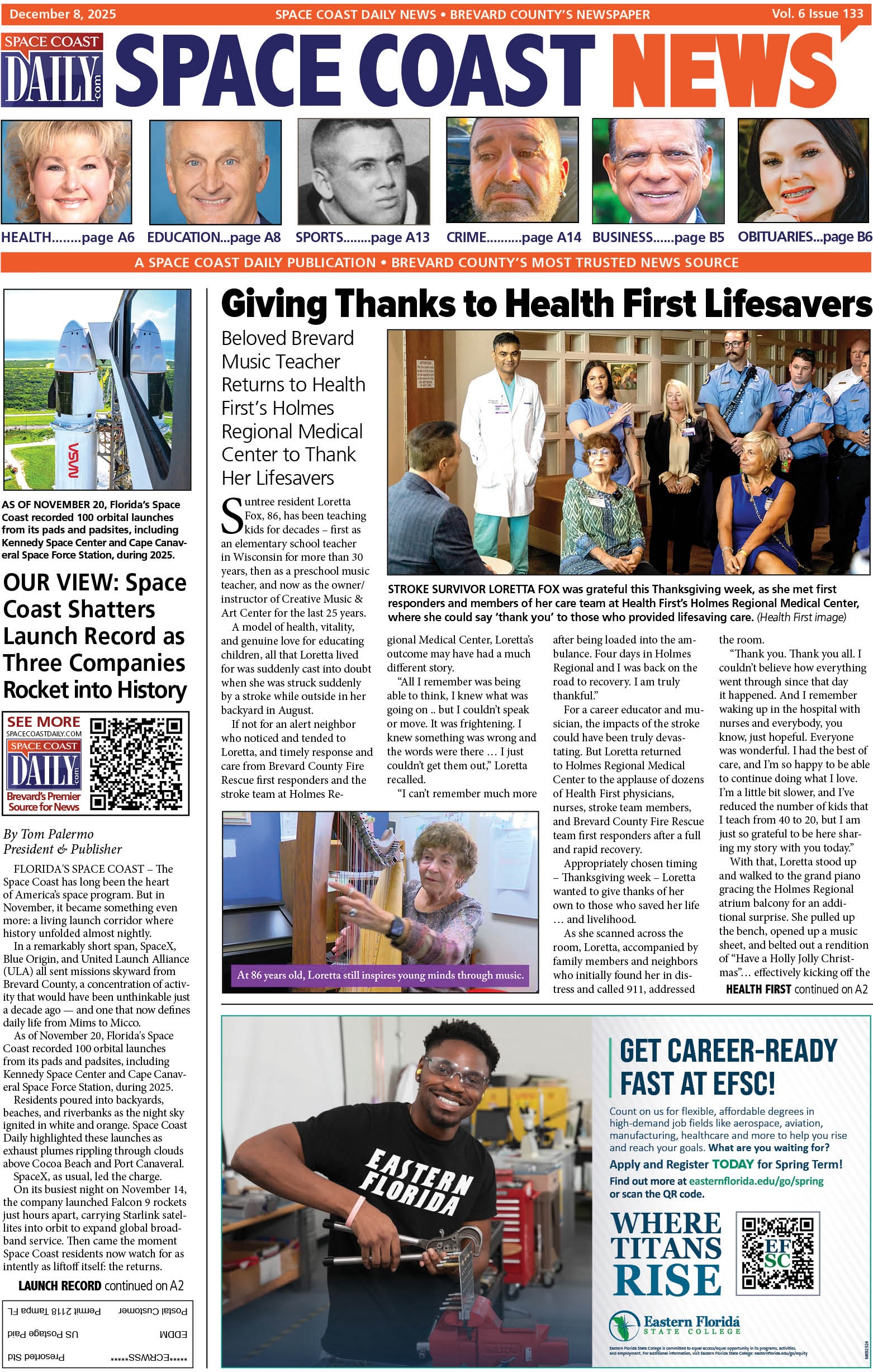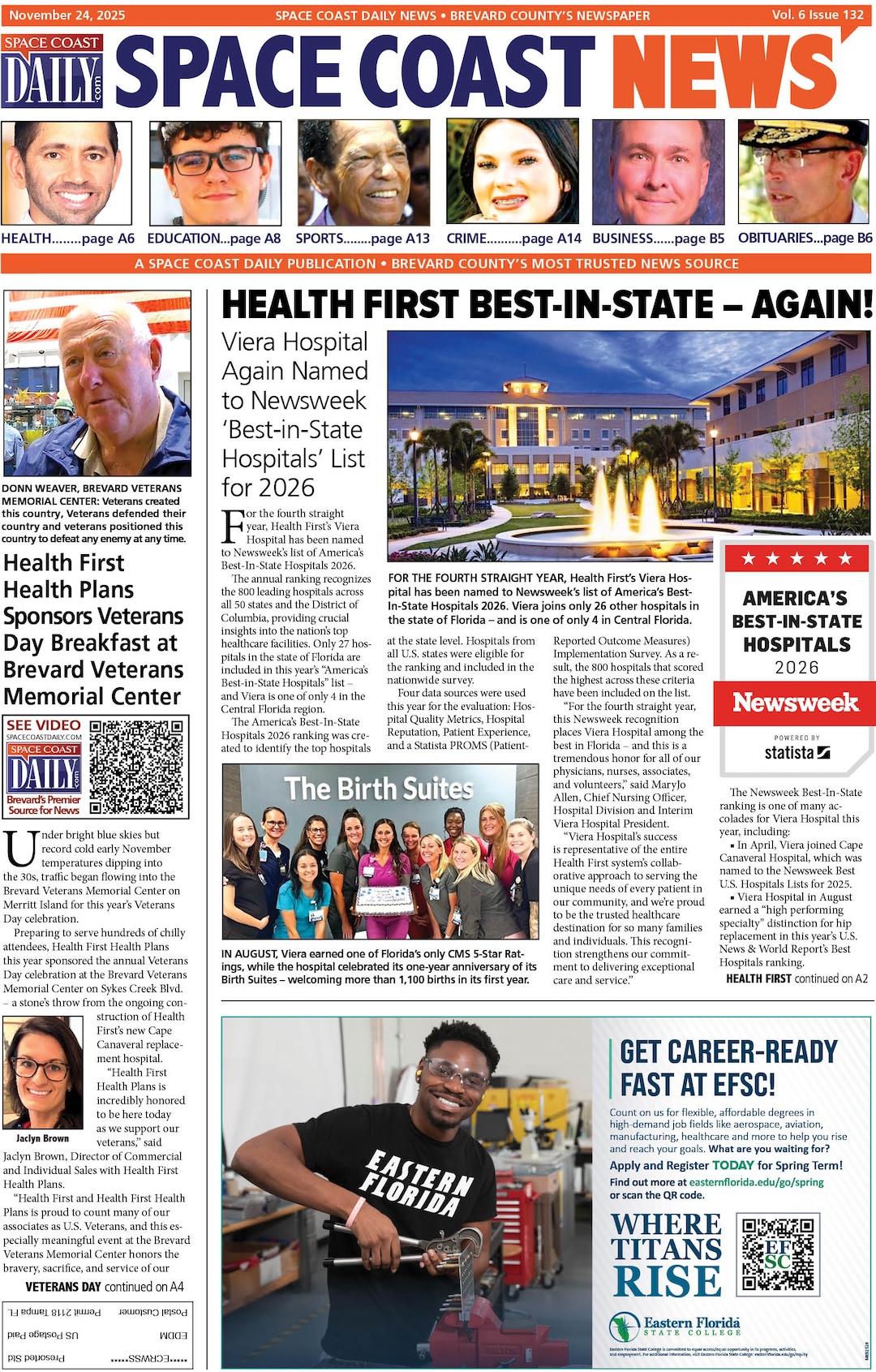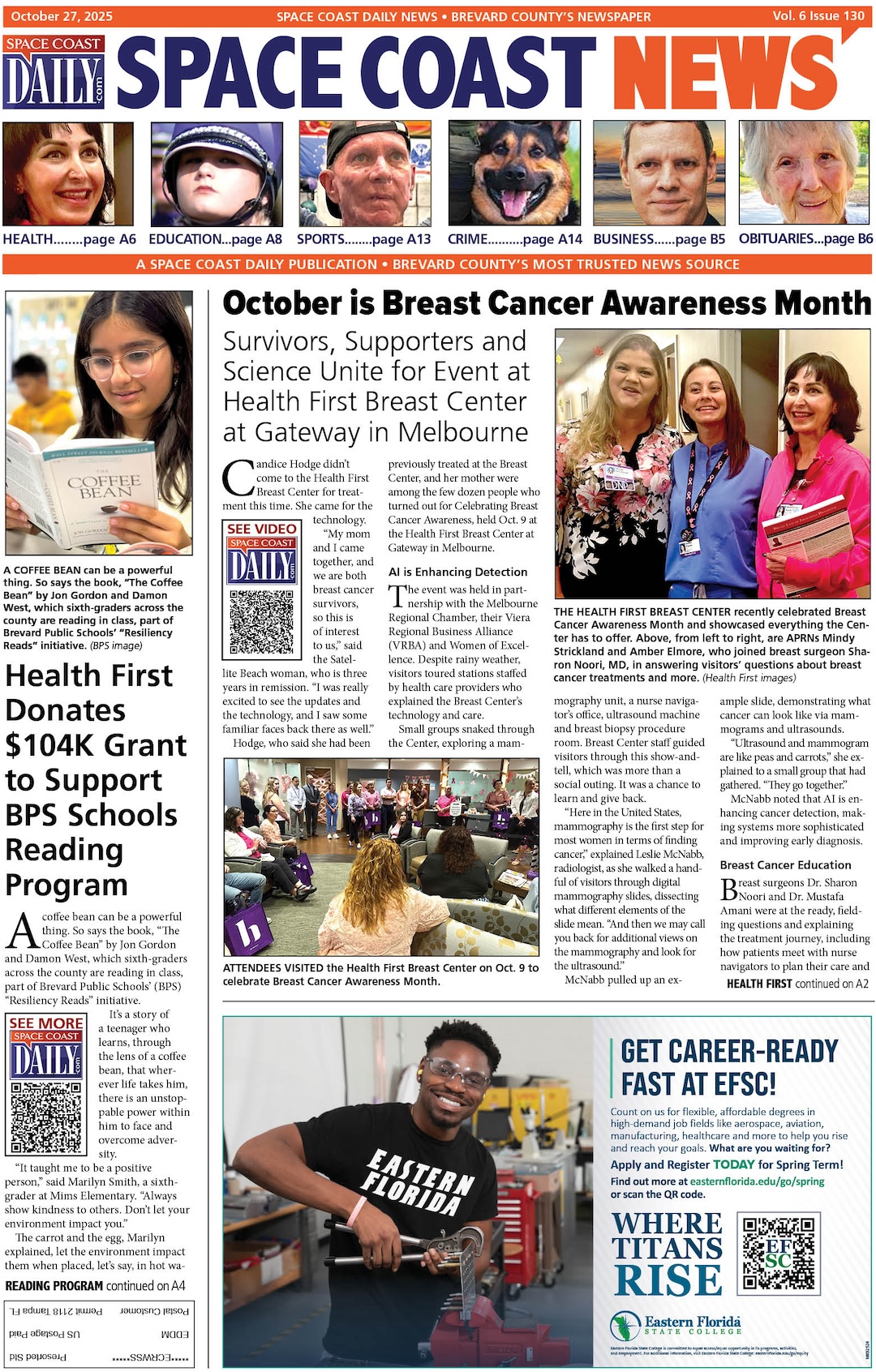10 Common Medical Emergencies And How To Respond
By Space Coast Daily // March 19, 2025

Medical emergencies can occur at any time, often without warning. Knowing how to respond in these situations can make a significant difference in outcomes. Whether at home, work, or in public, understanding the basics of first aid and emergency response can save lives.
This article outlines ten common medical emergencies and provides guidance on how to respond effectively.
1. Heart Attack
A heart attack, which is also called as a myocardial infarction, happens when the flow of blood to a part of the heart experiences obstruction, typically due to a blood clot forming in a narrowed coronary artery. This blockage deprives the heart muscle of oxygen, leading to tissue damage. Some common symptoms include intense pain in the chest, shortness of breath, dizziness, nausea, and severe pain radiating to the left arm, neck, or jaw.
As such, immediate action is critical. The first step is to call 911 immediately, as prompt medical intervention can save lives. While waiting for emergency services, have the person sit down and rest to reduce strain on the heart. If the individual is conscious and not allergic to aspirin, provide a 325 mg tablet to chew, as it can help prevent further clotting. Continuously monitor their breathing and level of responsiveness.
Also, if the person becomes unresponsive and stops breathing, be prepared to administer CPR until professional help arrives. Quick and informed responses can significantly improve survival rates and reduce long-term damage.
However, for more specialized care, looking for facilities like Idaho Falls Community Hospital can be an excellent idea as they offer comprehensive emergency services to address critical health situations.
2. Stroke
A stroke, often referred to as a “brain attack,” happens when blood flow to part of the brain experiences disruption, either due to a blockage (ischemic stroke) or a torn blood vessel (hemorrhagic stroke). This interruption deprives brain cells of oxygen, leading to potentially permanent damage. Some symptoms typically appear suddenly and may include weakness or numbness in the face, arm, or leg (especially on one side of the body), confusion, difficulties in speaking or understanding speech, eye problems, loss of balance, or a severe headache.
Because of this, time is critical in stroke treatment, so calling 911 immediately is essential. When speaking to emergency responders, note when symptoms began, as this information helps determine the most effective treatment options. While waiting for help, keep the person calm and lying down in a comfortable position, preferably on their side if they are unconscious. Avoid giving them food or drink, as swallowing difficulties could lead to choking. Quick recognition and response can significantly improve outcomes and reduce the risk of long-term disability.
3. Choking
Choking is a life-threatening emergency when an object, such as food or a small toy, becomes lodged in the airway, obstructing airflow and preventing breathing. It can happen to anyone but is particularly common in children because they tend to put small objects in their mouths and in adults who may not chew food thoroughly. Recognizing the signs of choking—such as inability to speak, coughing, clutching the throat, or turning blue—is crucial for a timely response.
For conscious adults, the Heimlich maneuver is the recommended first aid technique. Stand behind the person, wrap the arms around their waist, and deliver upward abdominal thrusts to dislodge the object. For infants, use a combination of back blows and chest thrusts while holding the child face down on the forearm.
If the person becomes unconscious, carefully lower them to the ground, call 911 immediately, and begin CPR. Start with chest compressions and check the mouth for the object before attempting rescue breaths. Quick and appropriate action can save lives during a choking emergency.
4. Severe Allergic Reaction (Anaphylaxis)
Anaphylaxis is a severe, potentially fatal allergic reaction that occurs rapidly after exposure to an allergen, such as certain foods, insect stings, or medications. It triggers a systemic response, causing symptoms like swelling of the face and throat, difficulties in breathing, a sudden drop in blood pressure, and dizziness or loss of consciousness.
Hence, immediate action is critical. If the person has an epinephrine auto-injector (e.g., an EpiPen), administer it promptly into the outer thigh, as this can reverse severe symptoms. Call 911 without delay, as anaphylaxis requires advanced medical care. While waiting for help, keep the person lying flat on their back to improve blood flow, unless they’re vomiting or having trouble breathing, in which case they should be placed on their side. Continuously monitor their breathing and be prepared to perform CPR if necessary.
5. Seizures
Seizures occur due to sudden, abnormal electrical activity in the brain, leading to symptoms such as convulsions, loss of consciousness, muscle rigidity, and confusion. They can be caused by epilepsy, head injuries, infections, or other medical conditions. During a seizure, the priority is to ensure the person’s safety.
Furthermore, clear the surrounding area of sharp or dangerous objects to prevent injury. Don’t attempt to restrain the person, as this could cause harm. Gently place them on their side in the recovery position to keep their airway clear and prevent choking on saliva or vomit. Most seizures end within a few minutes, but if the seizure lasts more than five minutes or if it is the person’s first seizure, call 911 immediately.
6. Fractures and Broken Bones
Fractures, or broken bones, typically result from falls, accidents, or direct trauma, causing significant pain, swelling, bruising, and sometimes visible deformity or inability to move the affected area. Proper first aid is essential to prevent further injury and promote healing. The first step is to immobilize the injured area using a splint, sling, or any rigid material to stabilize the bone and minimize movement.
Additionally, applying an ice pack wrapped in a cloth to the injury can help reduce swelling and alleviate pain. Avoid attempting to realign the bone or applying pressure directly to the injury. Seek medical attention promptly, as fractures typically require professional evaluation, imaging (like X-rays), and treatment, such as casting or surgery, to ensure proper healing and prevent complications like infection or misalignment.
7. Burns
Burns are injuries caused by heat, chemicals, electricity, or radiation, and their severity depends on the depth and size of the affected area. Minor burns, such as first-degree burns, typically cause redness and pain, while severe burns (second-degree or third-degree) may involve blistering, charring, or damage to deeper tissues.
For minor burns, immediately run cool (not cold) water over the area for at least 10 minutes to reduce pain and swelling. Avoid using ice, as it can further damage the skin. Cover the burn using a sterile bandage to safeguard it from infection. For serious burns, call 911 immediately. Don’t remove clothing stuck to the skin, as this can cause further damage. Keep the person warm and elevate the burned area if possible while waiting for emergency help.
8. Heatstroke
Heatstroke is a life-threatening condition that occurs when the body’s temperature regulation fails, often due to prolonged exposure to high temperatures or strenuous physical activity in hot environments. Symptoms include confusion, rapid heartbeat, headache, nausea, hot and dry skin, and, in severe cases, loss of consciousness.
Therefore, immediate action is crucial to prevent organ damage or death. Move the person to a cooler, shaded area or an air-conditioned space. Apply cool, wet cloths or ice packs to their armpits, groin, neck, and back to lower their body temperature. Fan the person to promote cooling. If symptoms are severe, such as unconsciousness or extreme confusion, call 911 immediately. Heatstroke requires urgent medical attention to stabilize the individual and prevent complications.
9. Diabetic Emergencies

Diabetic emergencies arise from imbalances in blood sugar levels, either too high (hyperglycemia) or too low (hypoglycemia). Hypoglycemia, characterized by symptoms like confusion, sweating, shakiness, and unconsciousness, requires immediate action. Provide a fast-acting sugary drink or snack, such as candy, fruit juice, or glucose tablets, to quickly increase blood sugar levels.
In contrast, hyperglycemia, marked by excessive thirst, frequent urination, and fatigue, is a more gradual but serious condition that necessitates urgent medical attention. Don’t attempt to treat hyperglycemia at home; instead, call for professional help. In both cases, closely monitor the person’s condition, ensuring they remain conscious and stable until emergency services arrive, or their symptoms improve.
10. Poisoning
Poisoning occurs when a person is exposed to harmful substances through ingestion, inhalation, or skin contact. Common toxins include household chemicals, medications, plants, or contaminated food. Symptoms vary depending on the substance but may include nausea, vomiting, abdominal pain, difficulty breathing, confusion, dizziness, or seizures. Immediate action is crucial. Contact the Poison Control Center for expert advice tailored to the situation. Do not induce vomiting unless explicitly instructed, as some substances can cause more harm if brought back up.
While waiting for professional help, gather critical details about the poison, such as its name, the amount consumed, and the time of exposure. If possible, keep the substance’s container handy for reference. Providing accurate information can help health care providers determine the best course of action, ensuring prompt and effective medical treatment to minimize harm and prevent complications.
Conclusion
Being prepared to handle medical emergencies can save lives and reduce the severity of injuries. While basic first aid knowledge is essential, professional medical care is often necessary. By keeping the information presented above in mind, individuals can make a significant difference in emergency situations.











